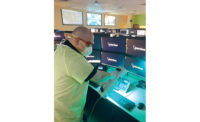First, allow me to say I am honored to be chair of the Alarm Industry Communications Committee (AICC). We typically meet four times a year in Washington, D.C. For years I have resisted having AICC go online, even in a hybrid form. The argument not only from me but from other members was that we would miss the in-person interaction. But suddenly, dramatically and without a choice, we were thrust into an online “virtual” experience.
To my amazement, some members who first vehemently opposed AICC’s going online found the virtual venue more appealing. Among the reasons are less time away from the office. The lack of personal interaction is still given as one negative, but it seems the positives outweigh the negatives in the short run.
A recent article pointed out that the industry seems uncertain about attending in-person industry events in 2021. Only a small percent said they would attend an in-person event, with the majority saying “maybe” or not at all. Surprisingly, many have already made up their minds that they are not traveling in 2021. They all seem to be waiting until the vaccination threshold reaches the “heard immunity” level.
That leads me to my main subject: Life after COVID-19. What will our world look like after the pandemic is in the rearview mirror? I believe we will see a fundamental change in our business world. We have gotten so adept at doing business virtually that the expense to revert to our previous world will take a long time and, frankly, may never entirely happen. The AICC experience I related above is just one example.
I believe we will see a revolution — more of an epiphany — in business travel that might last for a number of years. For those jobs that can be done from home, a certain percentage, albeit small, have been done so for many years. The pandemic forced all of us that can work that way into this mode.
Eventually, perhaps in some distant future, we will gradually go back to the 2019 model, but in the meantime, I can see less need for business flights and business space, and fewer business meals and business room nights. With the performance of broadband virtually everywhere in the world (and getting even more ubiquitous), if many businesses can exist and thrive by conducting business virtually, why spend the money in the old traditional manner? Even UL is allowing monitoring to be done remotely. I have recently heard from two successful salespeople, one in the security industry and the other in the computer field, that selling in a virtual world is actually easier.
So my message is that even when there is no longer a fear of the coronavirus, the business pattern set by the year 2020 will endure. Remote work options will stick around partly because employees have mostly performed well during the last 14 months. Remote work — in one form or another — is clearly here to stay, but questions remain about what offices will become.
With this in mind, UL along with the monitoring industry developed an industry-acceptable “standard” allowing central station personnel who handle signals and incoming phone calls to work from home.
Now, with a year of the COVID-19 pandemic lockdown behind us, we still don’t fully know what the new workplace paradigm will be. At the pandemic’s height over the summer of 2020, 40 percent of the U.S. labor force was working from home full-time, according to a recent study.
For workers who plan to continue remote work, a significant percentage of employers intend to help set up home offices by providing resources such as equipment, Wi-Fi upgrades or other incentives.
Some have even speculated that companies will close their offices after the pandemic to achieve cost savings. However, a research report last year predicted that offices will endure for a host of reasons — not the least of which is that the average lease is at least eight years. A growing body of research and anecdotal reports reveal that not having a physical office means fewer causal encounters and less incidental learning and collaboration among workers.
Employees and their employers have quickly adapted to remote work, and management is becoming more adept at guiding remote teams in completing tasks effectively away from the office. But finding just the right balance between office and remote work is going to be critical moving forward for recruitment, retention, performance and engagement.









